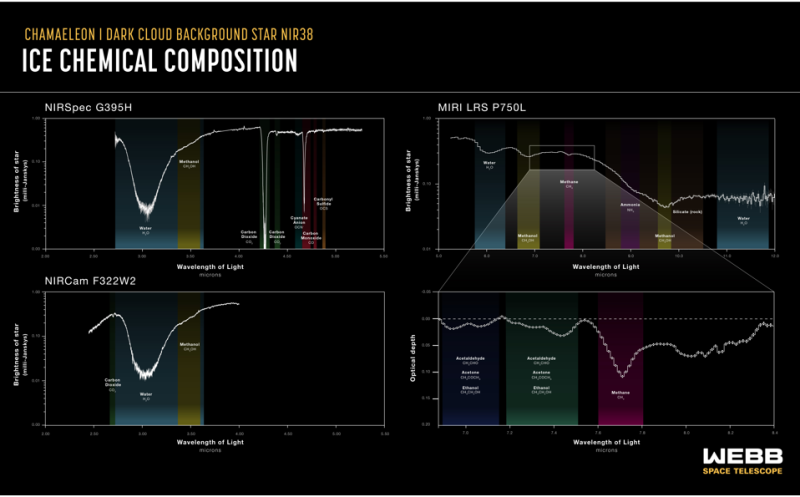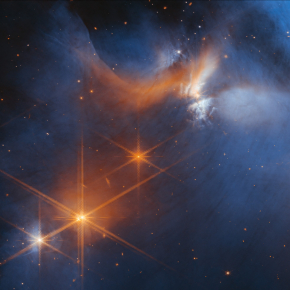JWST reveals the hidden chemistry of pre-stellar ice
An international team, including researchers from CNRS (see box), has been able to measure the composition of interstellar ices in the darkest and coldest regions of a molecular cloud measured to date, thanks to observations from the NASA/ESA/CSA James Webb Space Telescope (JWST)1 . This result allows astrophysicists to foreshadow the simple ice molecules that will potentially be incorporated into future exoplanets, while opening a new window on the origin of more complex molecules that are the starting point for the formation of the first building blocks of prebiotic interest.
Ices are an essential ingredient in planet building as they are good carriers of light elements such as carbon and oxygen that will be incorporated into planetary atmospheres and are the basis for the chemistry of prebiotic molecules such as sugars, alcohols and simple amino acids. In tenuous regions of space, icy dust grains provide a unique setting for atoms and molecules to meet, which can promote chemical reactions that lead to the formation of molecular species.
In this study, the team targeted ices buried in a particularly cold, dense and hard-to-study region of the Chameleon I molecular cloud, a region about 600 light years from Earth that is currently forming dozens of young stars. The study provided a detailed inventory of the deepest buried ices measured to date in a molecular cloud. In addition to simple ices such as water, as well as normal and heavy isotopes of carbon dioxide and carbon monoxide, the team was able to identify several other condensed species, including the cyanate anion, carbonyl sulphide - observed for the first time in a dense cloud - and the first organic molecule considered complex in space, methanol. This is the most comprehensive survey to date of the icy ingredients available to make future generations of planets, before they are heated during the formation of young stars.
This research2 is part of the Ice Age project, one of 13 JWST Early Release Science programmes led by Dr Melissa McClure, an astronomer at Leiden Observatory. These observations are designed to showcase the observational capabilities of JWST and allow the astronomical community to learn how to make the most of its instruments. The 'Ice Age' team is already planning further observations, and hopes to trace the path of ice from its formation to the assembly of potential icy comets.
CNRS laboratories involved
- Laboratoire physique des interactions ioniques et moléculaires (PIIM)
Tutelles : CNRS / AMU
- Institut des sciences moléculaires d'Orsay (ISMO)
Tutelles : CNRS / Univ. Paris-Saclay

For more informations
Reference :
M. K. McClure & al. An ice age JWST inventory of dense molecular cloud ices, Nature astronomy, January 2023.
International contacts :
- Melissa McClure
Leiden University, The Netherlands
Email: mcclure@strw.leidenuniv.nl
- Bethany Downer
ESA/Webb Chief Science Communications Officer
E-mail: Bethany.Downer@esawebb.org
- Ninja Menning
ESA Newsroom and Media Relations Office
Email: media@esa.int
